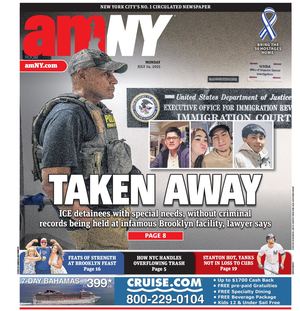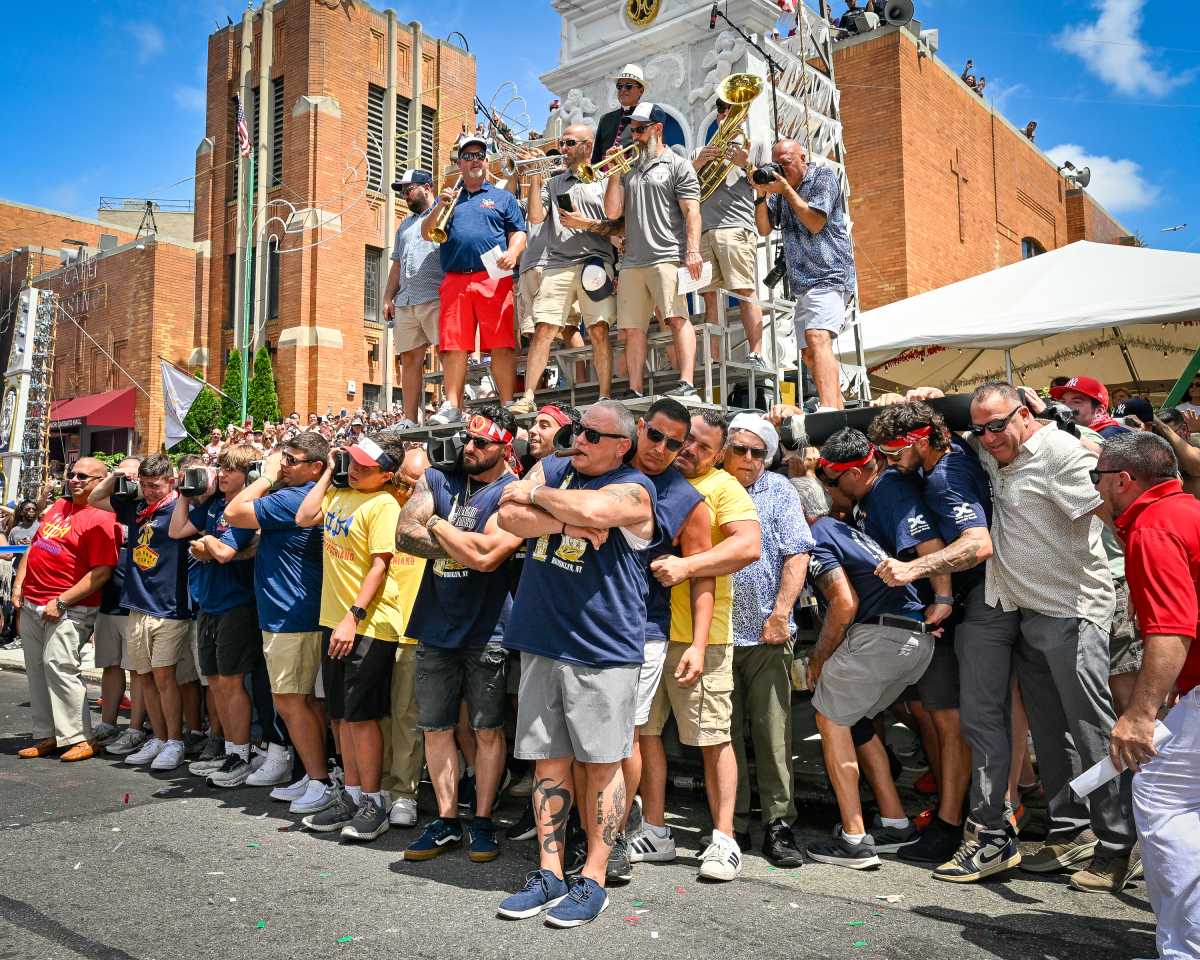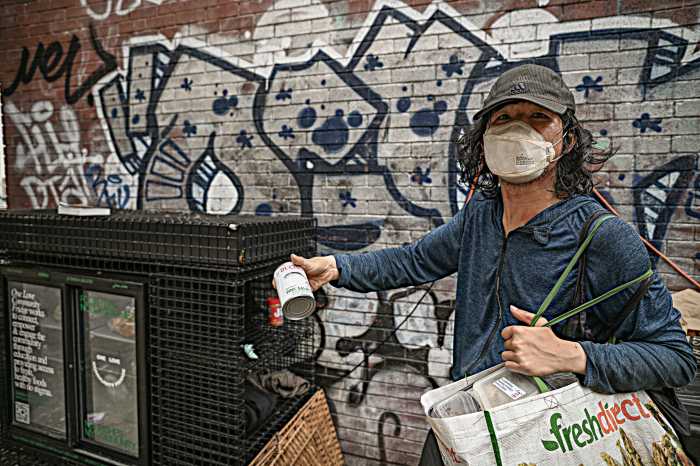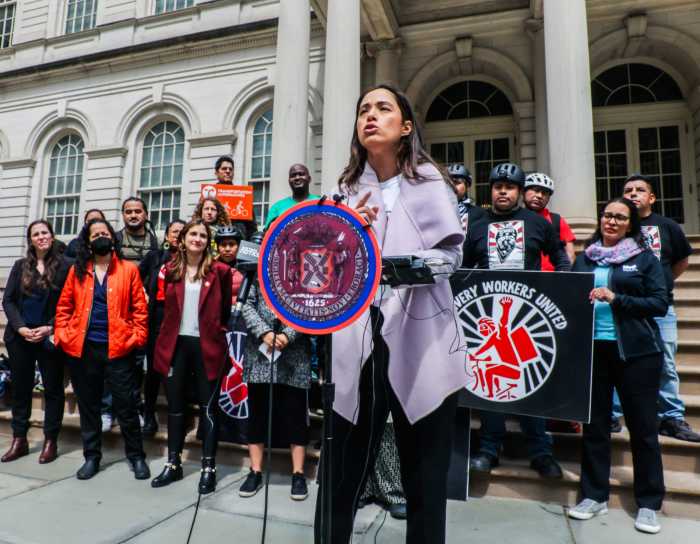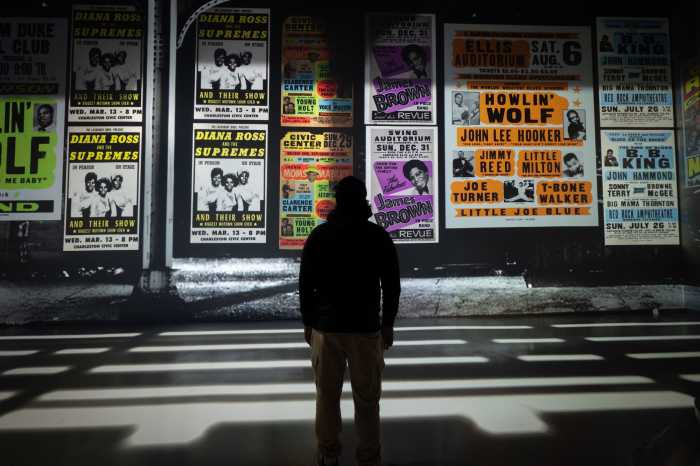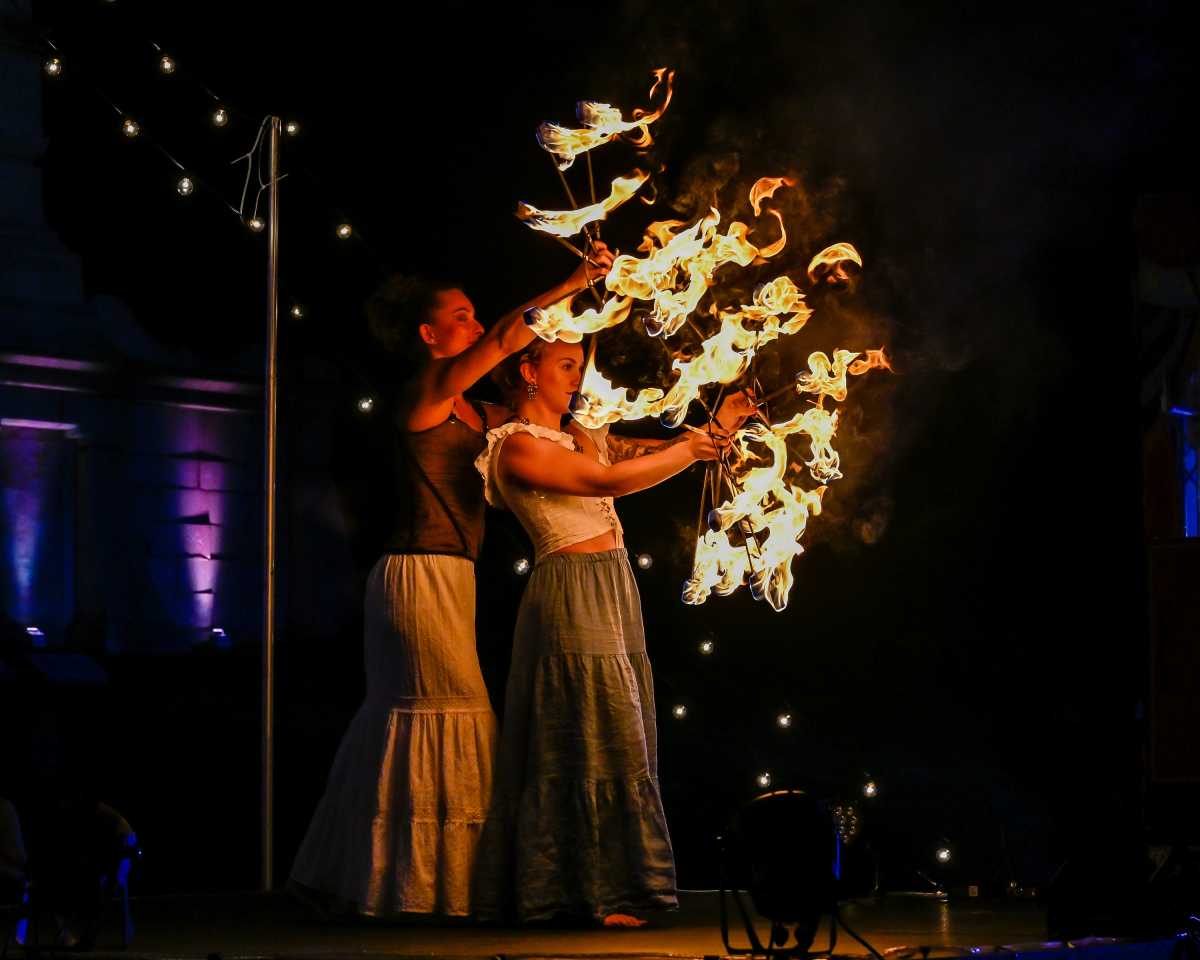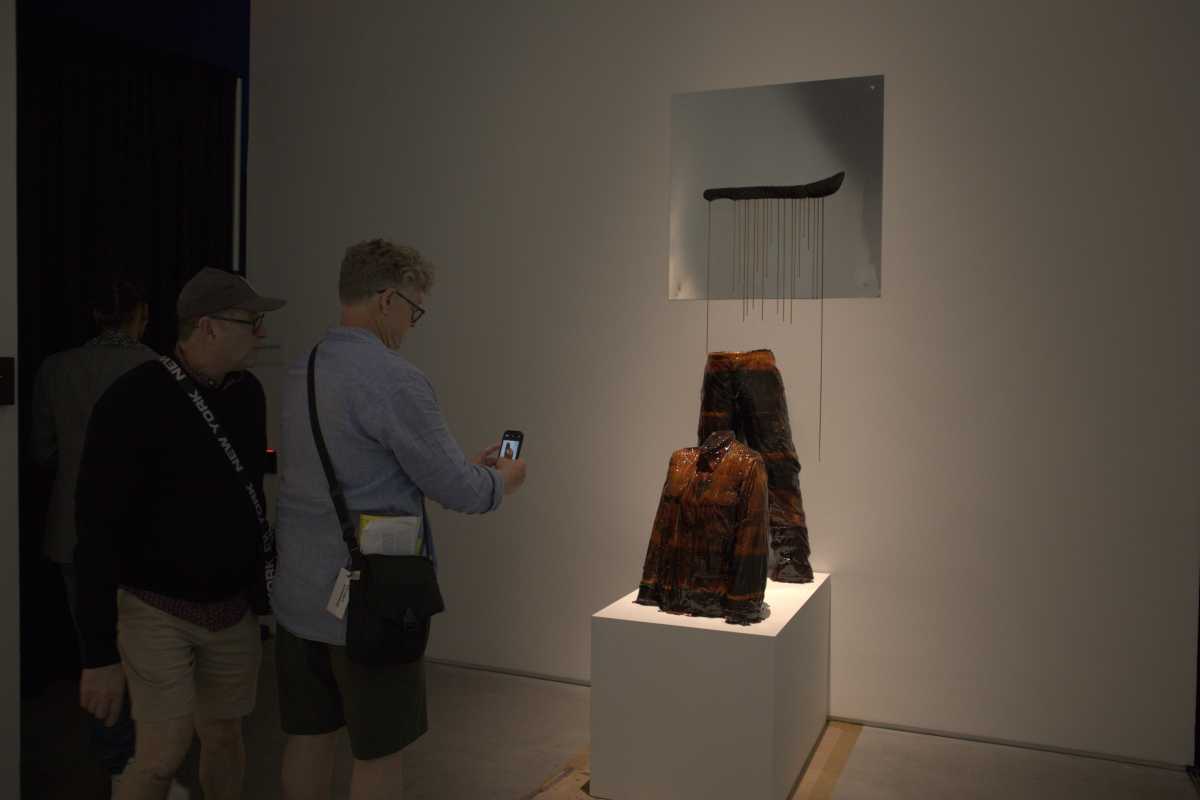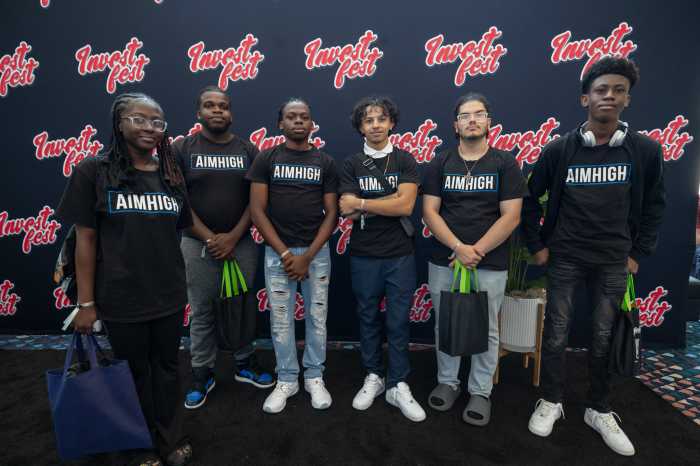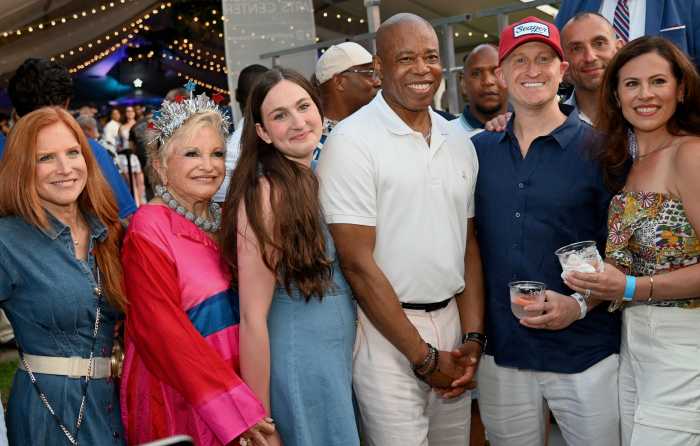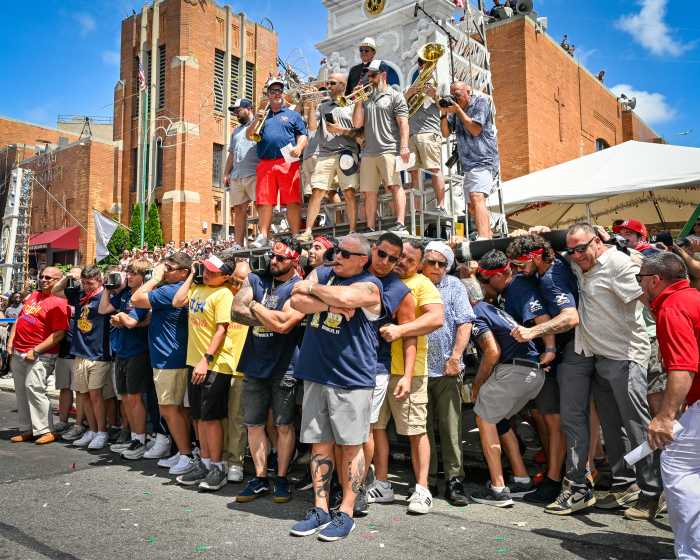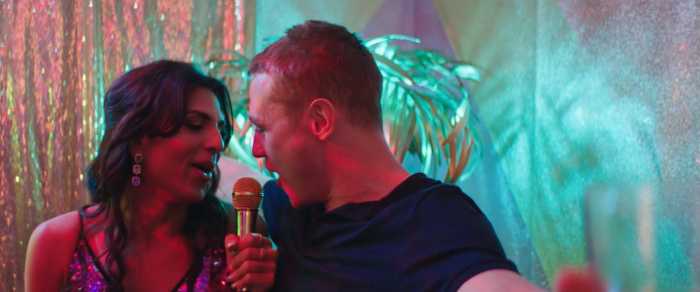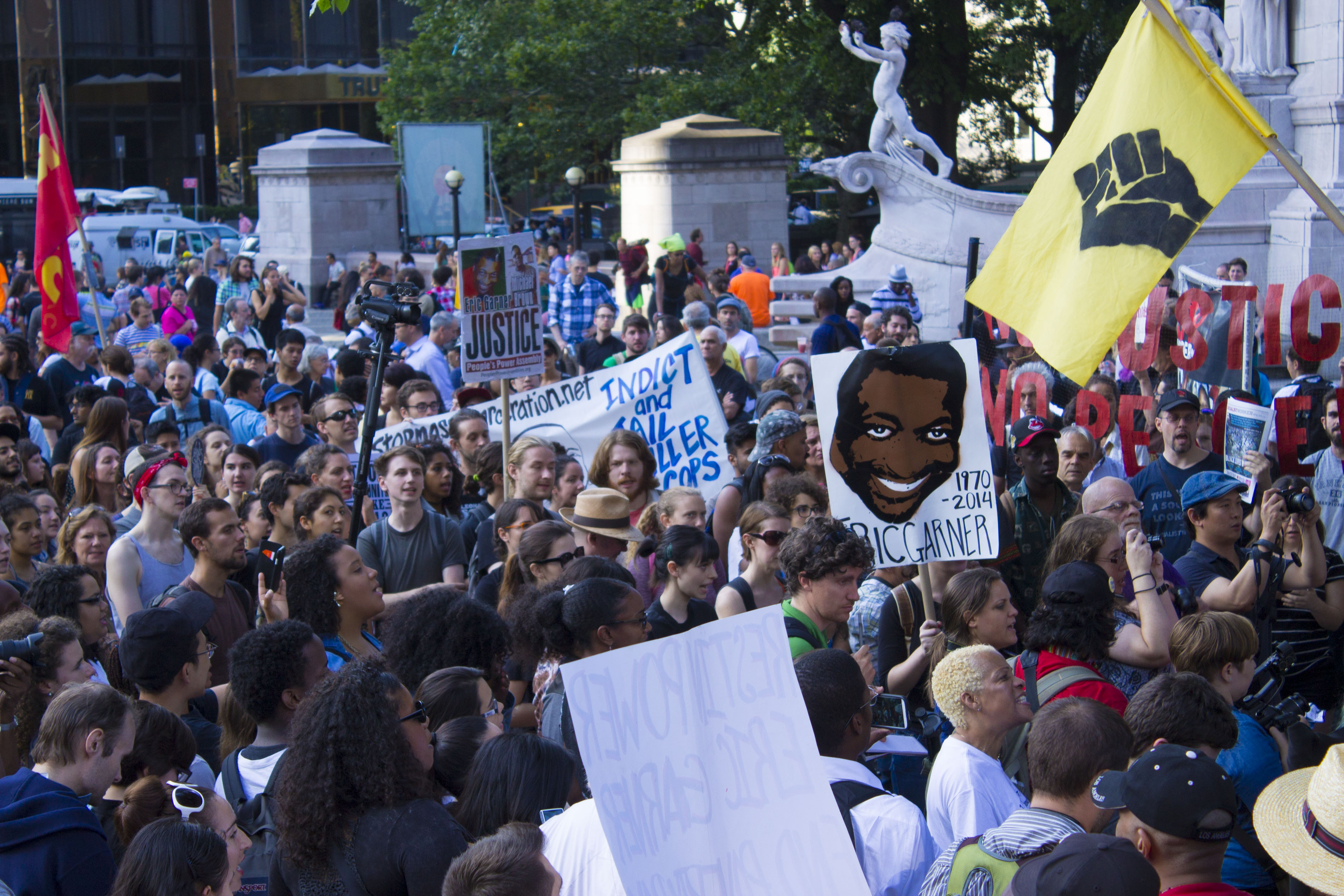
BY ZACH WILLIAMS | A march from Columbus Circle in memory of Eric Garner brought hundreds of #BlackLivesMatter protesters to the West Side on July 17. One year after the Staten Island man’s death helped inspire a national movement against police brutality and institutionalized racism, activists acknowledged progress while pressing for more change.
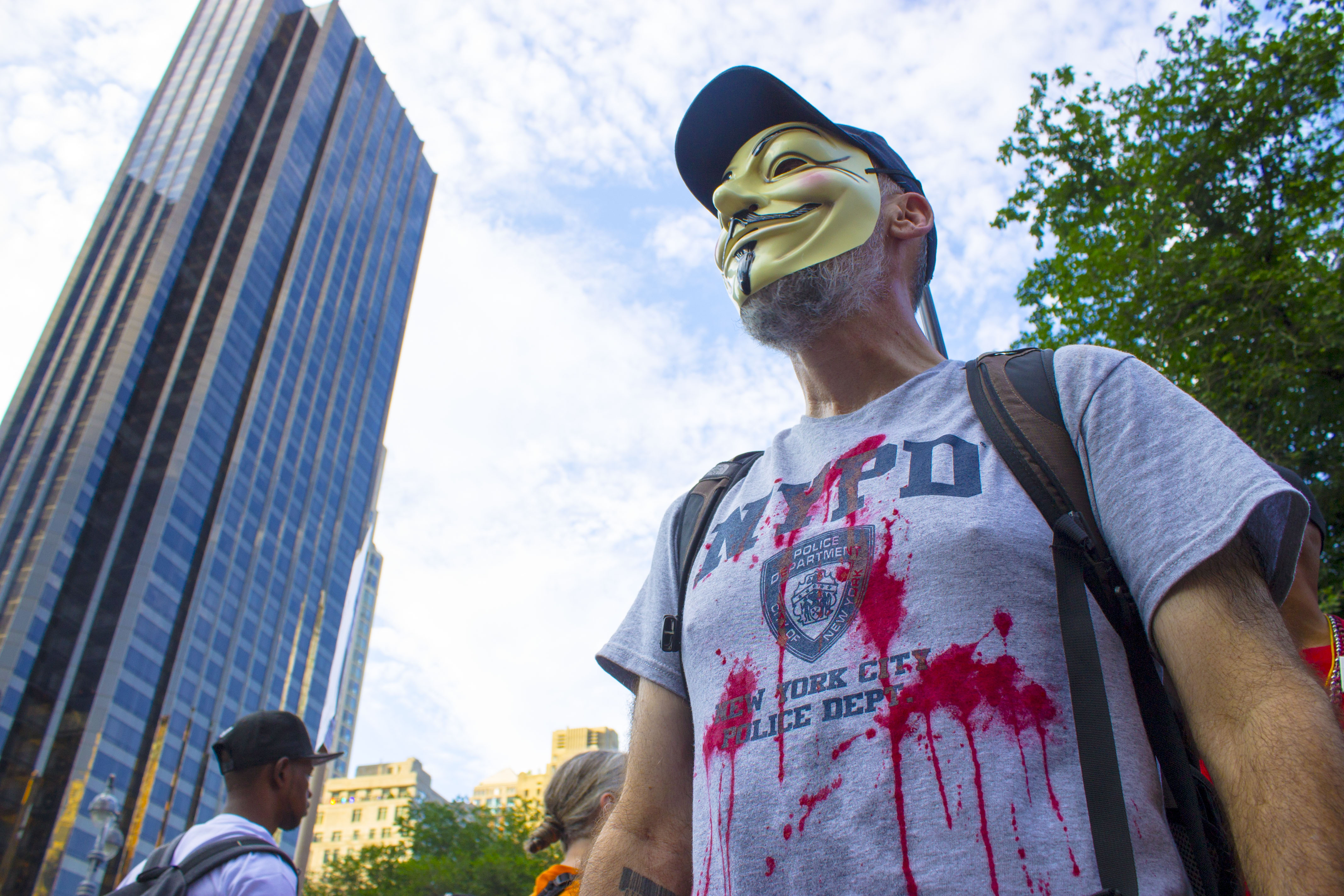
Speakers at the evening’s rally spoke to similar themes heard throughout the year of protests — which reached their highest volume last fall, when thousands of people swarmed local streets following the grand jury announcement that the NYPD officer who placed the fatal chokehold on Garner would not face criminal charges. Last Friday, there was evidence that their persistent efforts have had an impact.
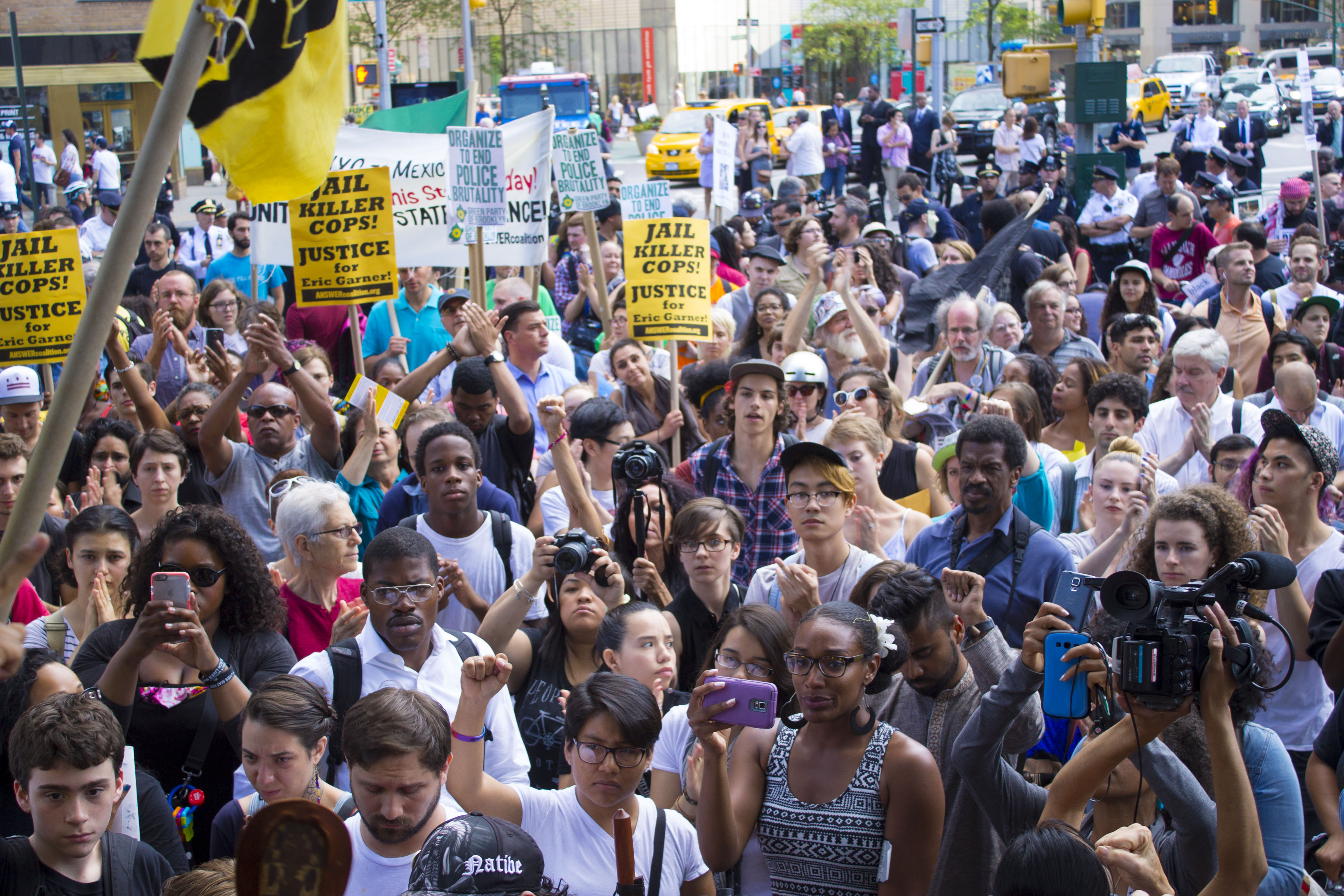
The Civilian Complaint Review Board argued in state supreme court on June 12 that they should receive the grand jury records of the Garner case from the Staten Island district attorney’s office. Governor Andrew Cuomo, meanwhile, issued an executive order on July 8 mandating that the state attorney general investigate all deaths of unarmed civilians by police. If a grand jury declines to press charges against an accused police officer — as was the case in the death of Michael Brown in Ferguson, MO — a report must be made, publicly indicating why.
Speakers at the July 17 rally demanded that the order become law.
Legislation before the city council and the state legislature, though, did not receive much mention at the rally, which focused more on the examples of police violence following the deaths of Garner and Brown as well as the ways in which violence, predominately against Black and Latino men, ultimately threatens society at large.
The high percentage of incarcerated Black men received fresh scrutiny in the past year, culminating in last week’s first visit to a federal prison by a sitting U.S. president. But it took the experience of Kalief Browder to end solitary confinement this year for inmates 21-years-old and younger at Riker’s Island. Browder was arrested for allegedly stealing a backpack and imprisoned at the notoriously violent jail for about three years before charges were dropped. He committed suicide earlier this year, haunted to the end, according to his brother Akeem Browder, who spoke at the rally.
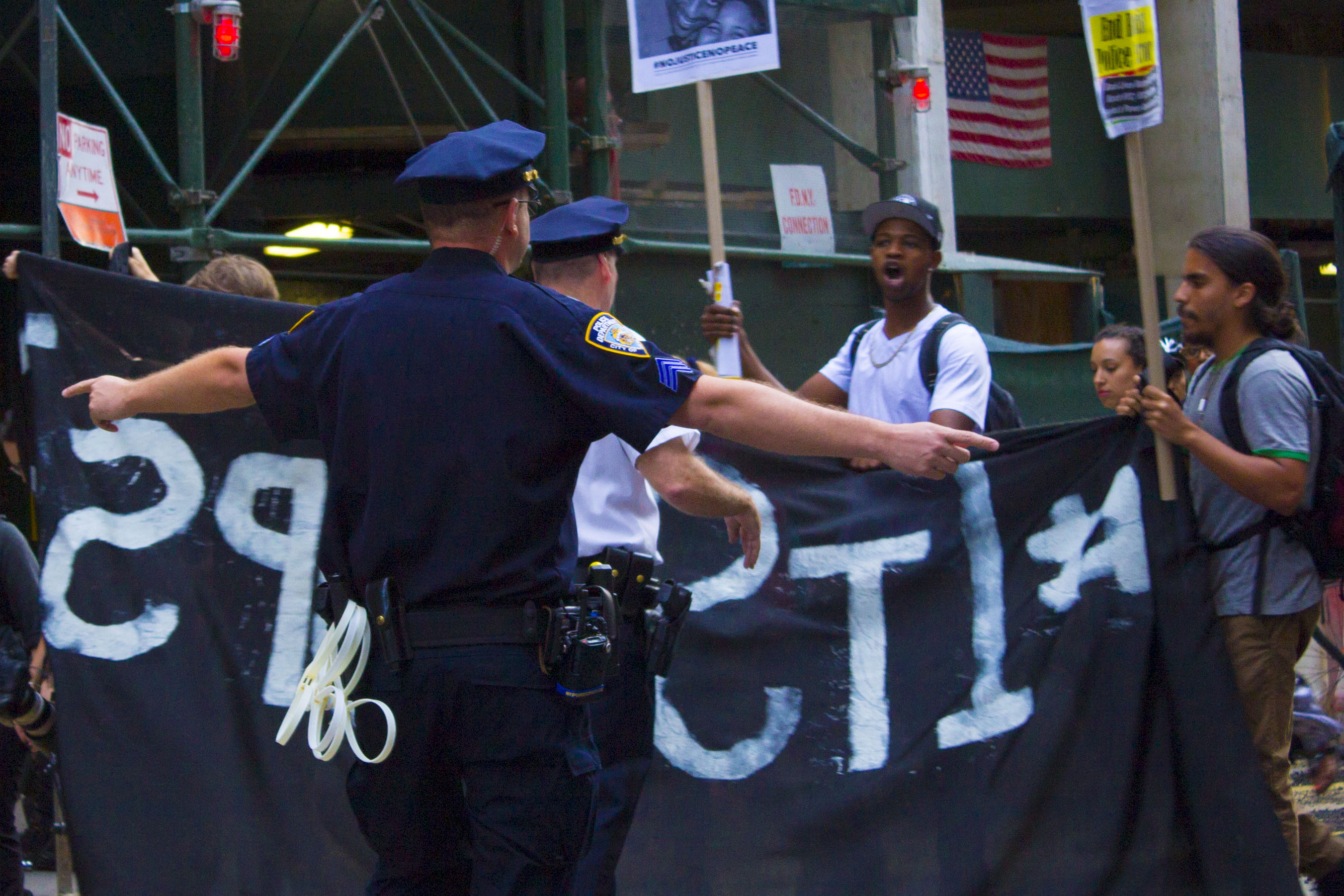
Police and court resources would have been better spent in pursuing more serious offenses than that allegedly committed by his brother, who maintained his innocence despite multiple offers of release in exchange for a plea bargain, Akeem Browder added.
His solution to such a perceived injustice reflects an ongoing debate within city politics surrounding the NYPD emphasis on the “Broken Windows” method of policing championed by Commissioner Bill Bratton. And as Akeem Browder spoke, a recorded message from the NYPD began to vie for the crowd’s attention, informing them that people who obstructed vehicular traffic would be subject to arrest for disorderly conduct.
“We should not be arrested for nonviolent crimes. [The NYPD] are here to protect and serve us against the violent offenders,” Akeem Browder said.
There were also subtle suggestions that the #BlackLivesMatter movement is every bit as concerned with achieving a cultural shift as it is in transforming public policy.
Hertencia Petersen, the aunt of Akai Gurley, spoke of how rookie officer Peter Liang called his police union representative after fatally shooting Gurley when they crossed paths by sheer coincidence on Nov. 20, 2014 in a stairwell in Brooklyn — causing some in the crowd to reflect on the ingrained perceptions necessary to cause a police officer to pull the trigger upon simply seeing a Black man.

Examples of police involvement in the deaths of unarmed people of color continued to accrue following Garner’s death. In recent months, a South Carolina policeman fatally shot a man after a traffic stop. The death of Freddie Gray in police custody sparked riots in a longtime restive neighborhood of Baltimore in April. #BlackLivesMatters and police reform once again loomed large in national discourse despite a cooling down period over the winter, when supporters of police rallied.
Then last week, Sandra Bland died in police custody three days after being arrested in Waller County, Texas for a minor traffic faux pas. She was reportedly on her way to interview for a job as a college outreach worker.
Such examples suggest that Black people cannot take safety for granted in public places. Two prominent examples concern a boy fatally shot for toting a toy gun and a man checking out a BB gun in an Ohio Walmart.
“Tamir Rice…you can’t play in the park. John Crawford…you can’t go shopping, so where are you safe to be Black in this country?” Brooklyn resident Elsa Waithe asked rhetorically.
After about an hour of talk, the crowd of activists mobilized for action, or at least chants including the longtime favorite of American radicals: “Whose streets? Our streets!” They moved through Central Park to avoid the dozens of police officers determined to maintain public order in the face of potential civil disobedience. The march reached the southeast corner of the park before heading south on Fifth Ave. One person was arrested soon thereafter, as the march cascaded across the avenues before reaching the southern end of Times Square.
Along the way, people watched from restaurant windows. Chinese tourists took snapshots with their cameras asking in their native language, “What is this?” An elderly couple waited patiently to cross the crowd after stepping out from an upscale restaurant. The costumed characters of Sesame Street, Disney and Marvel Comics shooed protesters away from photobombing tip opportunities with tourists.

The protesters continued to Macy’s flagship store on W. 34th St. and held a one-minute silence there in memory of Garner — who uttered “I can’t breathe” 11 times before he died one year earlier, to the day.
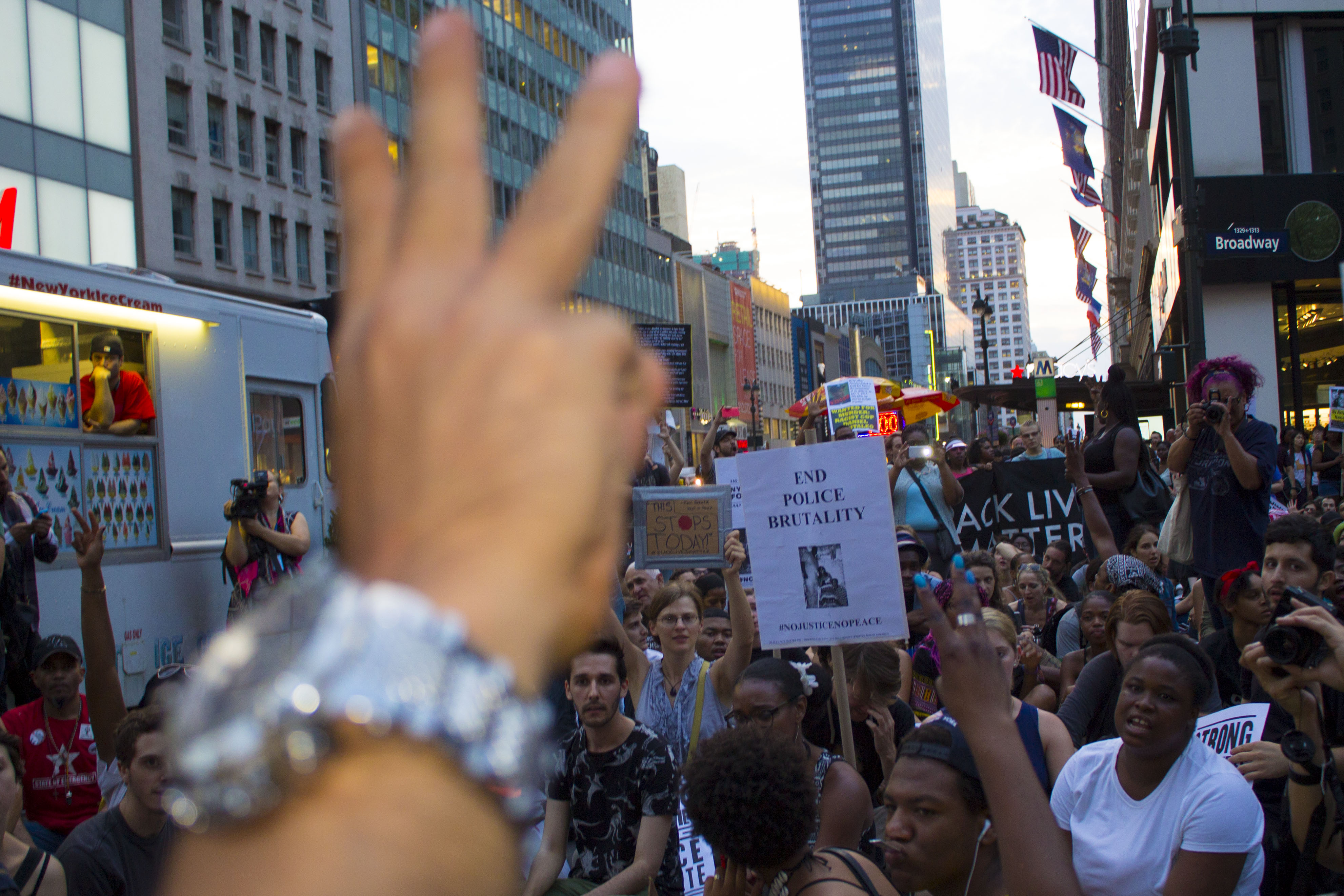
A short scuffle erupted when protesters challenged police for control of the street in front of the store. The result was the same as it has been for just about every demonstration, except the largest.
By all outward appearances, it seemed that the streets were very much in the possession of the NYPD that night, despite protesters’ chants to the contrary. Yet, the mass would willingly divide and the protesters would cheer as a lonely figure in the back of a passin vehicle acknowledged them from a large, metal box on a heavy-duty truck: an emergency medical technician cheering them on.
